How to Grow Your Own Wedding Flowers: 10 Easy Blooms for a Romantic DIY Bridal Bouquet
Thinking of growing your own wedding flowers? Our guide covers how to plant, care for, and cut the perfect DIY bridal bouquet, plus the best flowers to grow.
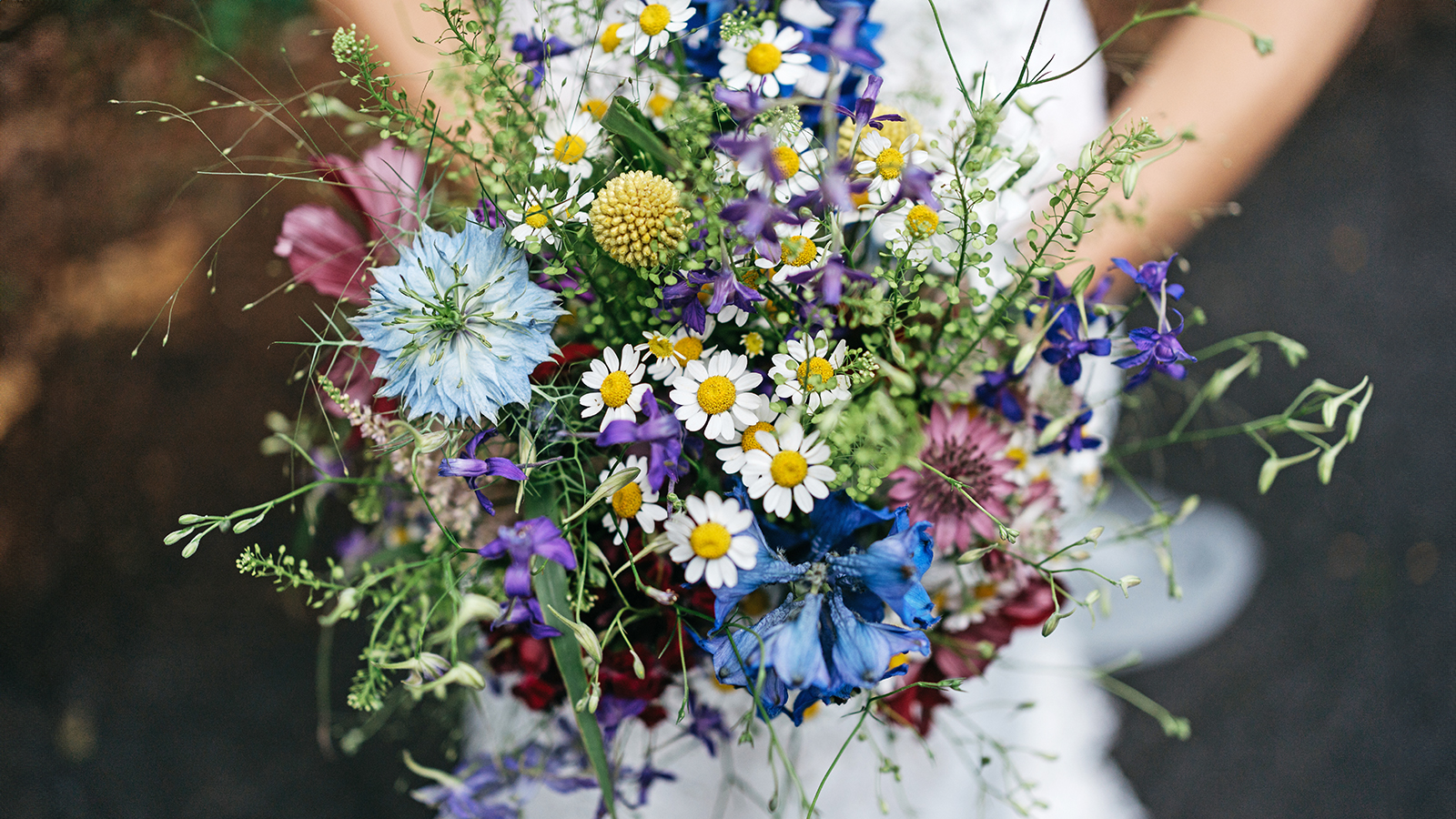

Catherine Duncan
Can you grow your own wedding flowers? Yes, you can! Growing your own bridal bouquet can be a rewarding and economical project, as long as you know what you’re getting into. Keep reading to learn more about how to plant and care for wedding flowers in your garden.
Growing Your Own Bridal Bouquet
There are a few reasons to grow your own wedding flowers. Weddings are expensive, and floral arrangements are a surprisingly costly part of the price tag. Also, imported flowers can sometimes be treated with harmful pesticides. By growing your own cut flower garden, you can save a lot of money and choose your own growing methods, but it’s not always easy.
When you’re growing your own bridal bouquet and floral arrangements, the number one concern is timing. Some flowers may need to be planted a few years ahead of time, and even with proper planning, many flowers are seasonal and simply won’t bloom at any other time. For instance, you’re just not going to have homegrown lilacs for an autumn wedding. If you’re growing perennials or flowering shrubs, it’s best to plant them three years before your wedding date. These plants often take a few years to really establish themselves. If they flower at all in the first year or two, it still probably won’t be a very big showing.
How to Plant Wedding Flowers
If you’re pressed for time and really want perennials, plant many more than you think you’ll need. Even if the flower yield for each plant is low, you’ll make up for it with sheer numbers. And if you have the time, planting more flowers than you need is always a safe bet. Pests and diseases can strike at any time, and the greater your numbers, the less likely your crop is to be devastated.
Other than timing and numbers, growing flowers for a wedding isn’t much different than planning any other cut flower garden.
When caring for wedding flowers, give them the best possible care. Make sure to keep them well watered and fertilized, and cover them with row covers, like these Hortifan plant covers from Amazon, if the temperatures dip too low.
Cut the flowers the day before the wedding, and store them in a fridge with the stems in water and the tops covered with a plastic bag. Remember to remove any fruit from the fridge first, as fruit gives off ethylene, which will cause the cut flowers to wilt.
Sign up for the Gardening Know How newsletter today and receive a free copy of our e-book "How to Grow Delicious Tomatoes".
Best Flowers to Grow for Weddings
Flowers that are seasonal, scented, grown with love and full of memories of family and friends gardens will be remembered well after a wedding by the guests and the bridal couple themselves. Try these easy-to-grow varieties for a romantic display.
1. Bachelor Buttons
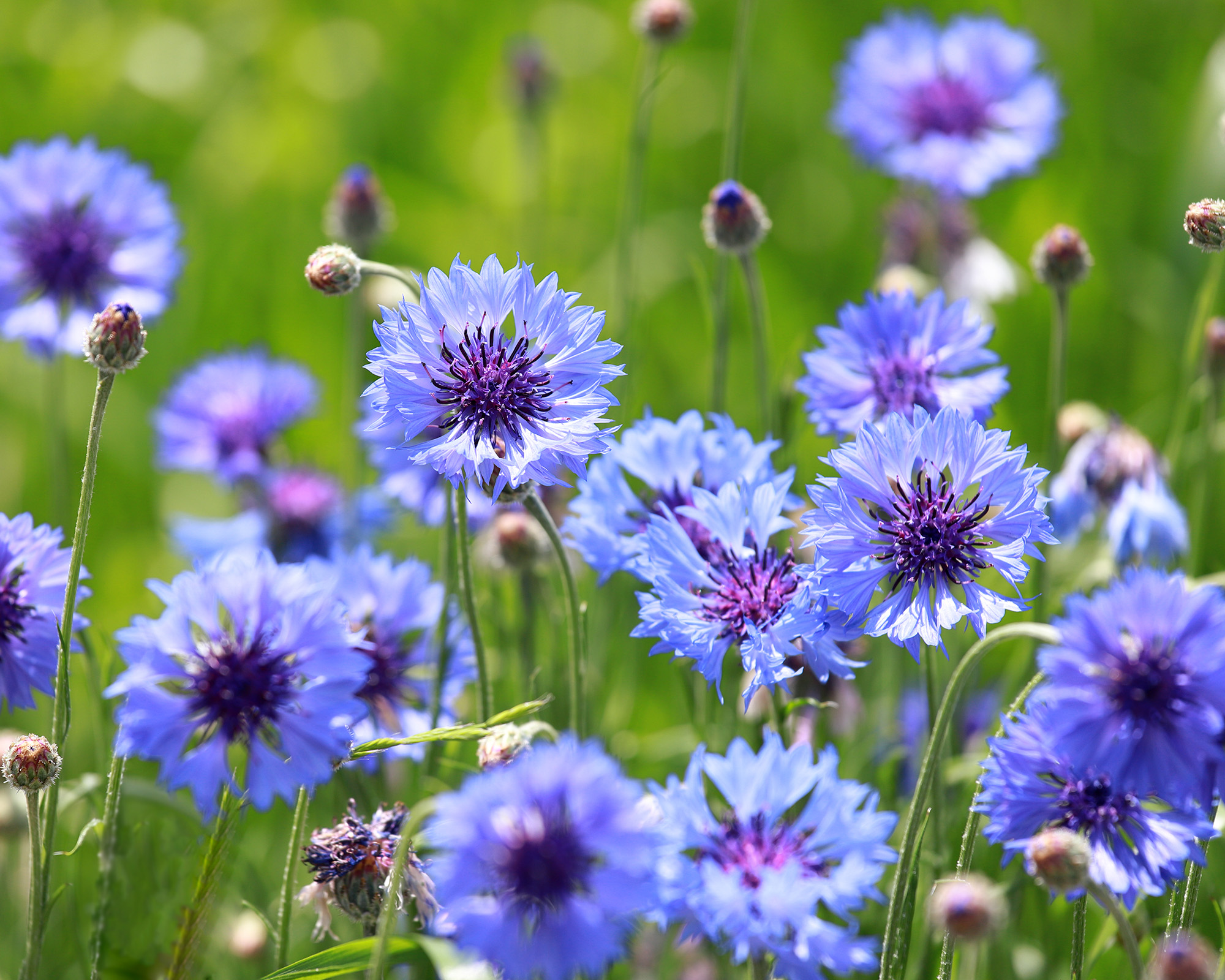
Bachelor buttons – or cornflowers – are prized for their color and their ability to last well out of water. They are easy to grow and are "cut and come again" flowers, providing blooms over a long season. They are brilliant out of water, which prevents wilting in a bridal bouquet or buttonhole and can give wedding flowers a country-garden feel. They are a hardy annual, so seeds can be sown in the autumn prior to the wedding to overwinter, or started in the spring for flowers later in the summer. Blue, purple, and white cornflowers work well in hair combs or for providing bright spots of color in a bouquet.
2. Scabiosa
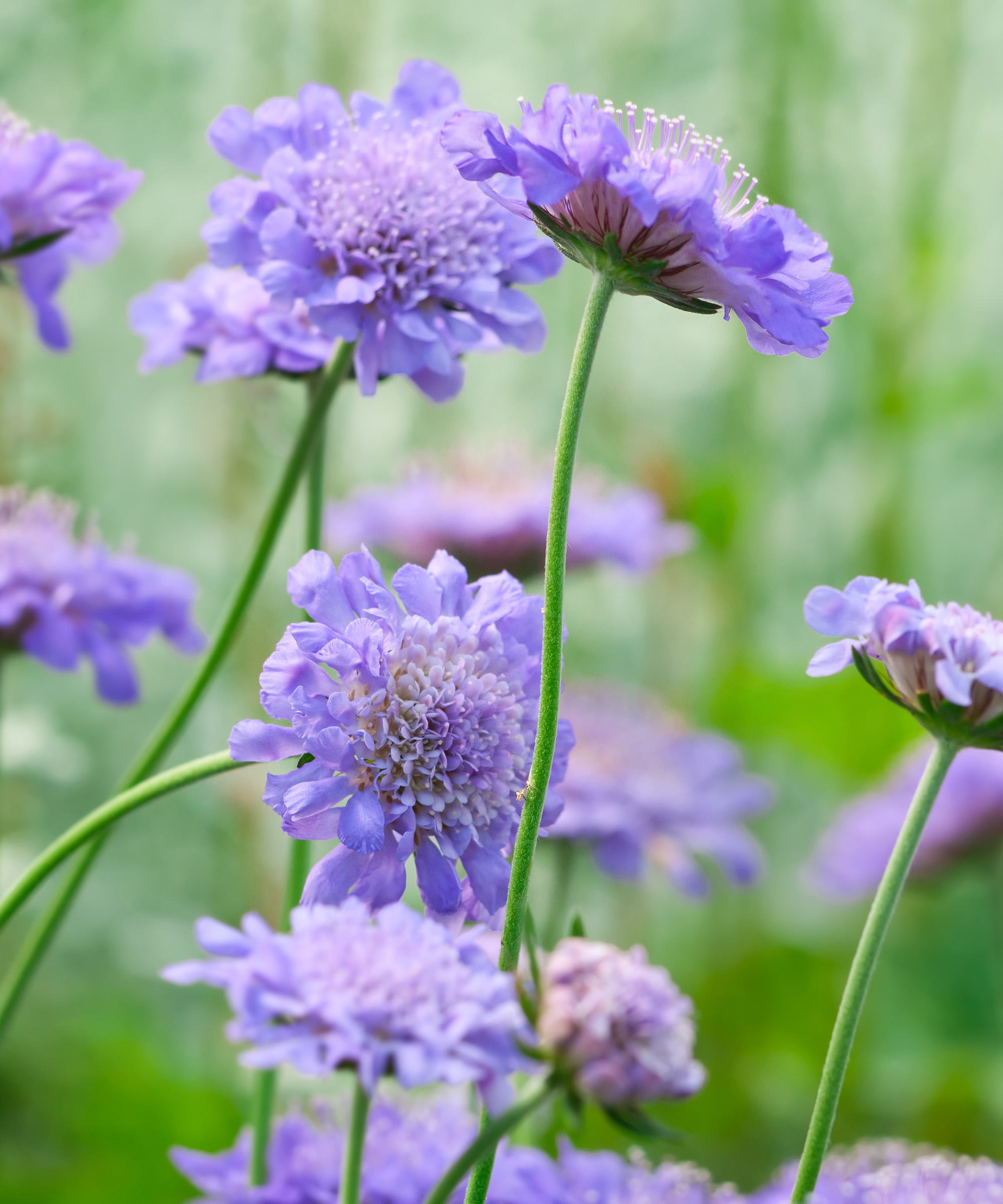
There are many varieties of scabiosa, both annual and perennial, and both look great in bouquets. They come in a variety of colors and will keep providing flowers the more they are cut. White annual scabiosa is a classic choice for bridesmaid bouquets, while pink and white varieties are perfect for a bridal bouquet. This is a flower that really gets going in late summer and can bloom right through autumn until the first frosts.
3. Ammi Majus

Ammi majus is a great white filler in bouquets with its airy, frothy flowers. This is a hardy annual that can be started in the autumn or spring. When it is very young, it can wilt, so make sure to cut it when it has matured but before the pollen drops. It will then last very well in wedding arrangements, such as at the front of a bridesmaid's bouquet for a July wedding.
4. Cosmos
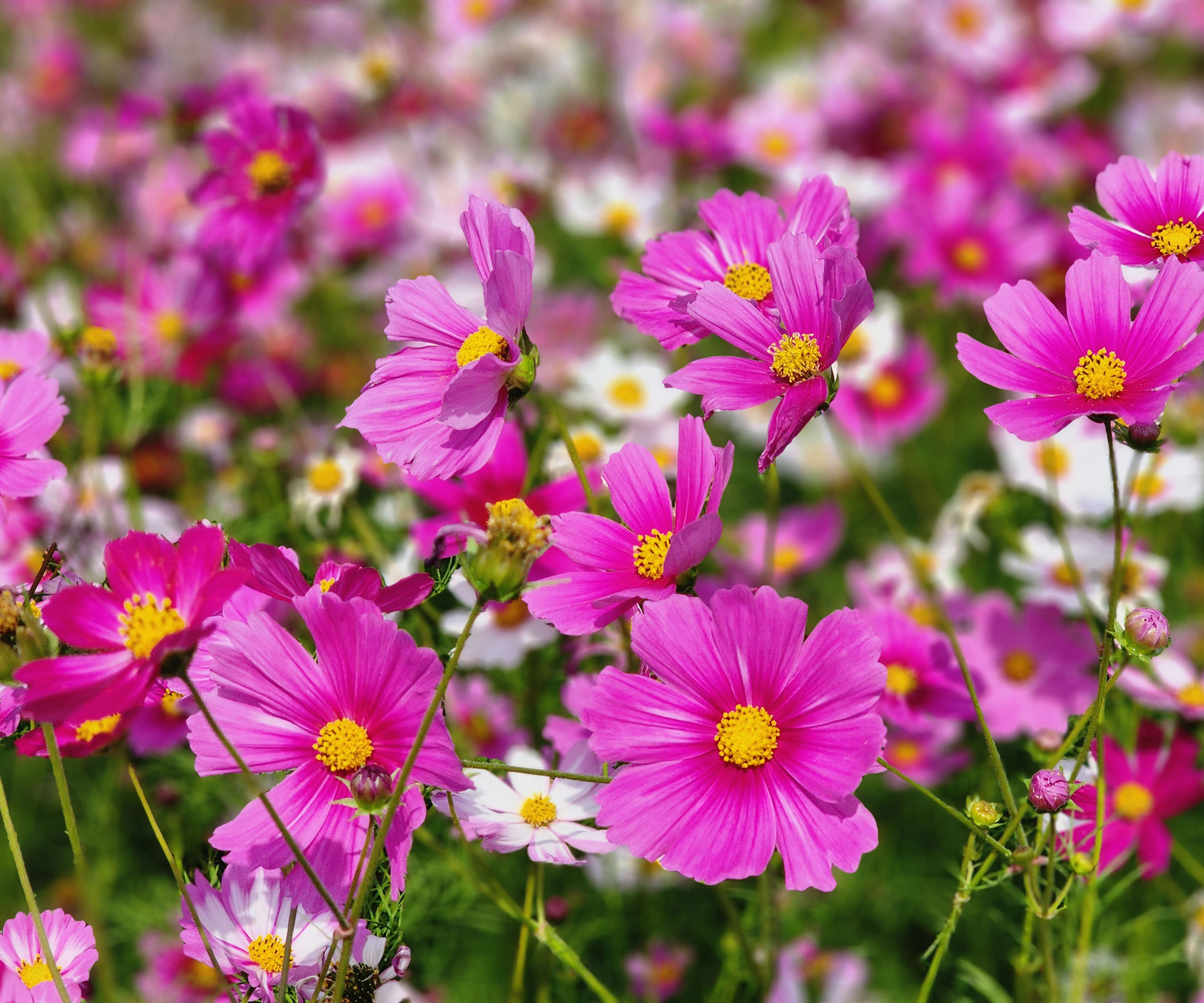
White and pink varieties of cosmos are common in wedding bouquets. It is a beautiful, delicate flower that lasts well when supported by other flowers and foliage. It also looks beautiful in table arrangements. It is more tender than flowers like cornflowers and Ammi, so it must be sown in the spring and only planted out when the risk of frost has gone. White Cosmos can be used throughout a bouquet, while pink varieties can provide a beautiful focal point.
5. Achillea

This is another great filler flower. Achillea ptarmica provides beautiful white flowers not unlike baby's breath (Gypsophila). Achillea millefolium – or yarrow – comes in a variety of colors and fulfills the same role as Ammi but is slightly denser in a bouquet. This perennial can be grown from seed, or you can buy perennial plants for the garden instead. Pink Achillea, for example, is excellent for adding soft color to a bride's bouquet.
6. Astrantia
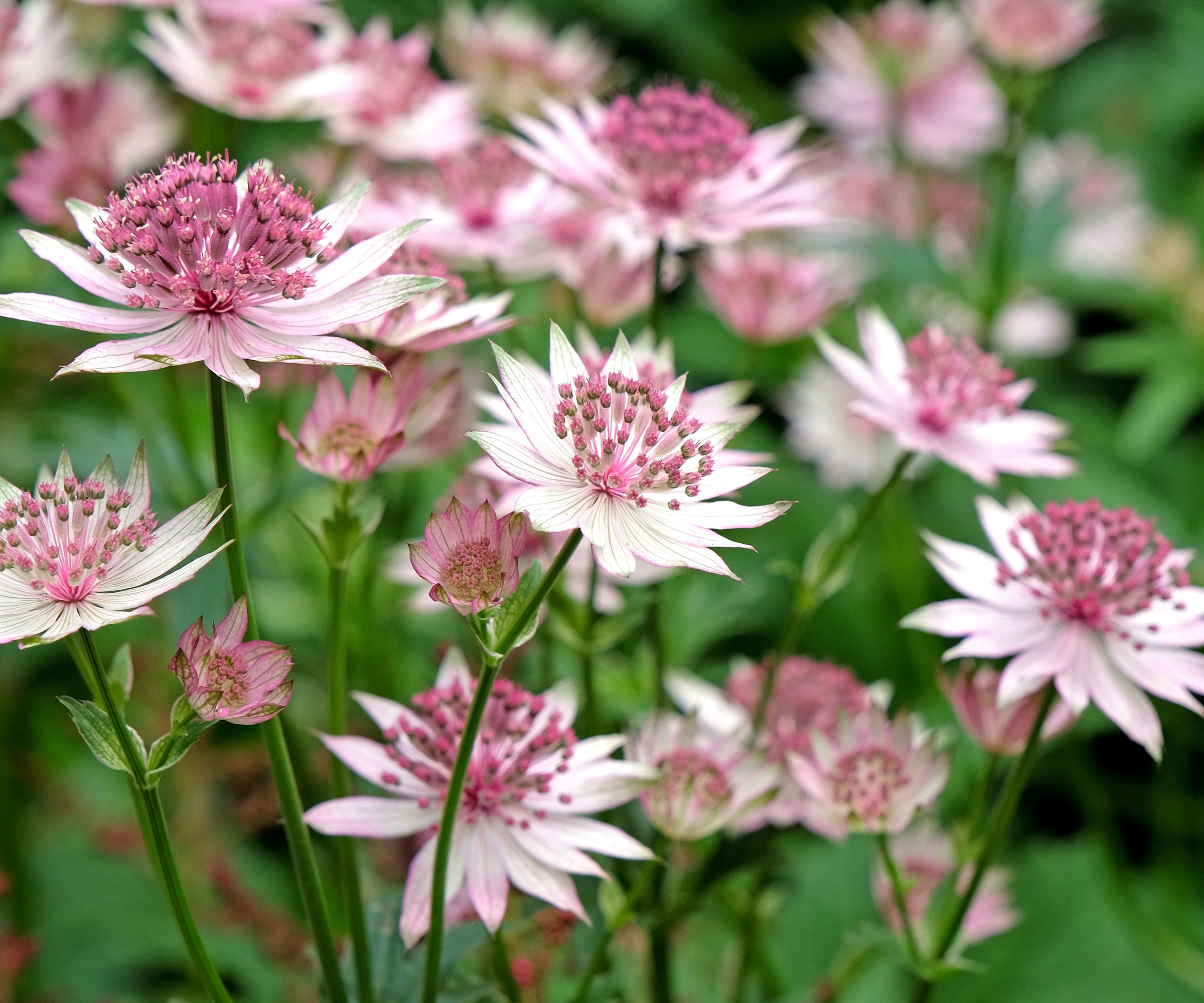
Astrantia – or masterwort – can be grown from seed, but it can take a long time to germinate and a few years to establish a good plant. To get flowers much earlier, you can buy perennial plants. Astrantia is an excellent cut flower for wedding work and also dries very well, making it suitable for buttonholes and flower crowns as well as bouquets.
7. Larkspur

Larkspur is a hardy annual that can be easily grown from seed each year. It provides a vertical spike in bouquets or can be used to trail at the edges, softening the appearance. It also makes lovely confetti when dried. White larkspur can be used for a trailing effect, while blue or purple varieties add striking vertical spikes of color.
8. Dianthus
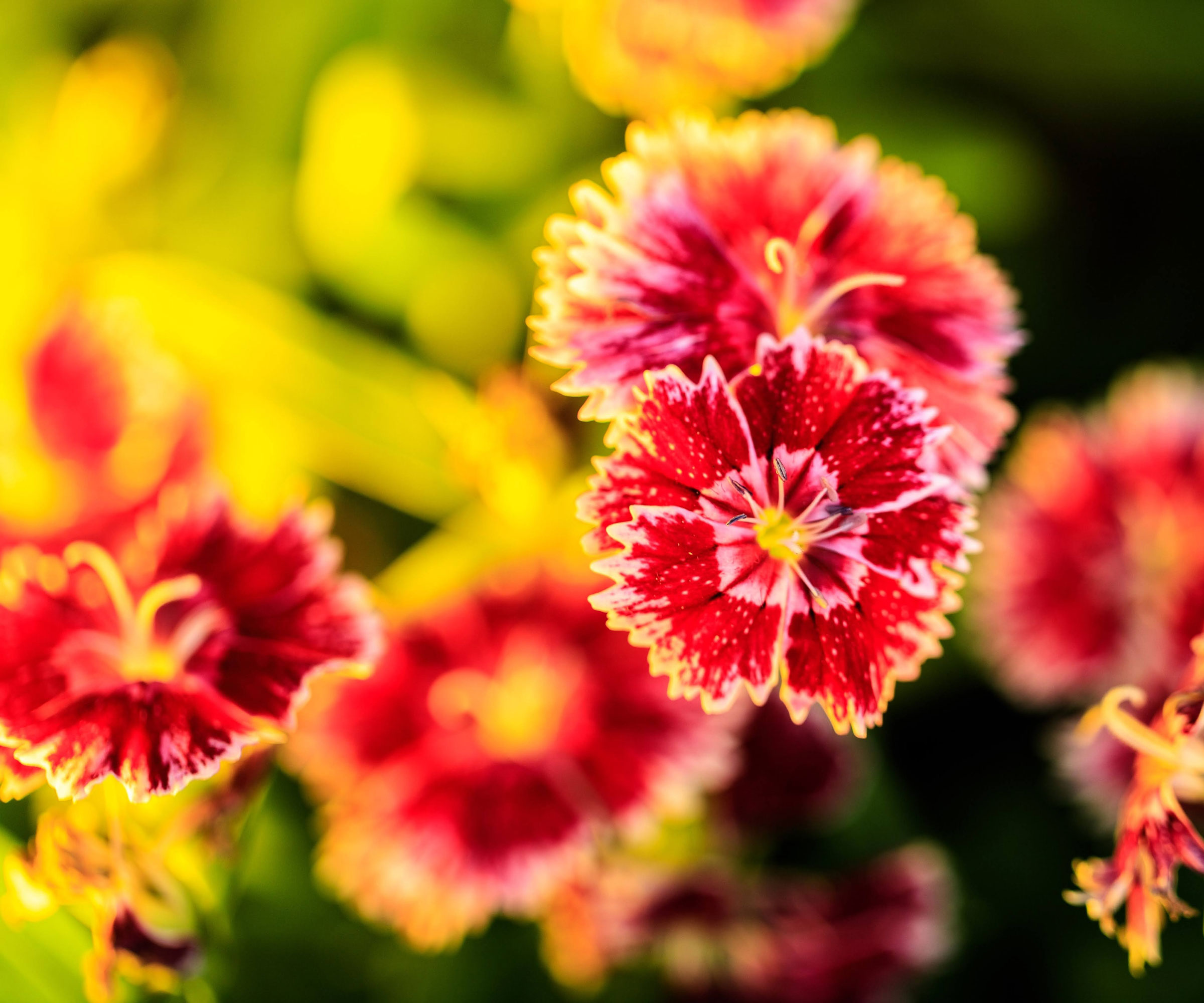
Sweet William – or Dianthus – features flowers on strong stems, which last an exceptionally long time in a vase and are also excellent in wedding work out of water. They are biennials, so they must be grown in the summer prior to the one when you want them to flower. Sown in June, they will produce plants with a good root system that will continue to grow over the winter, ready to shoot up flowering stems the following year. Under the right conditions, dianthus may flower for another year after that. Pale pink varieties are a classic choice for a summer bridal bouquet.
9. Nigella
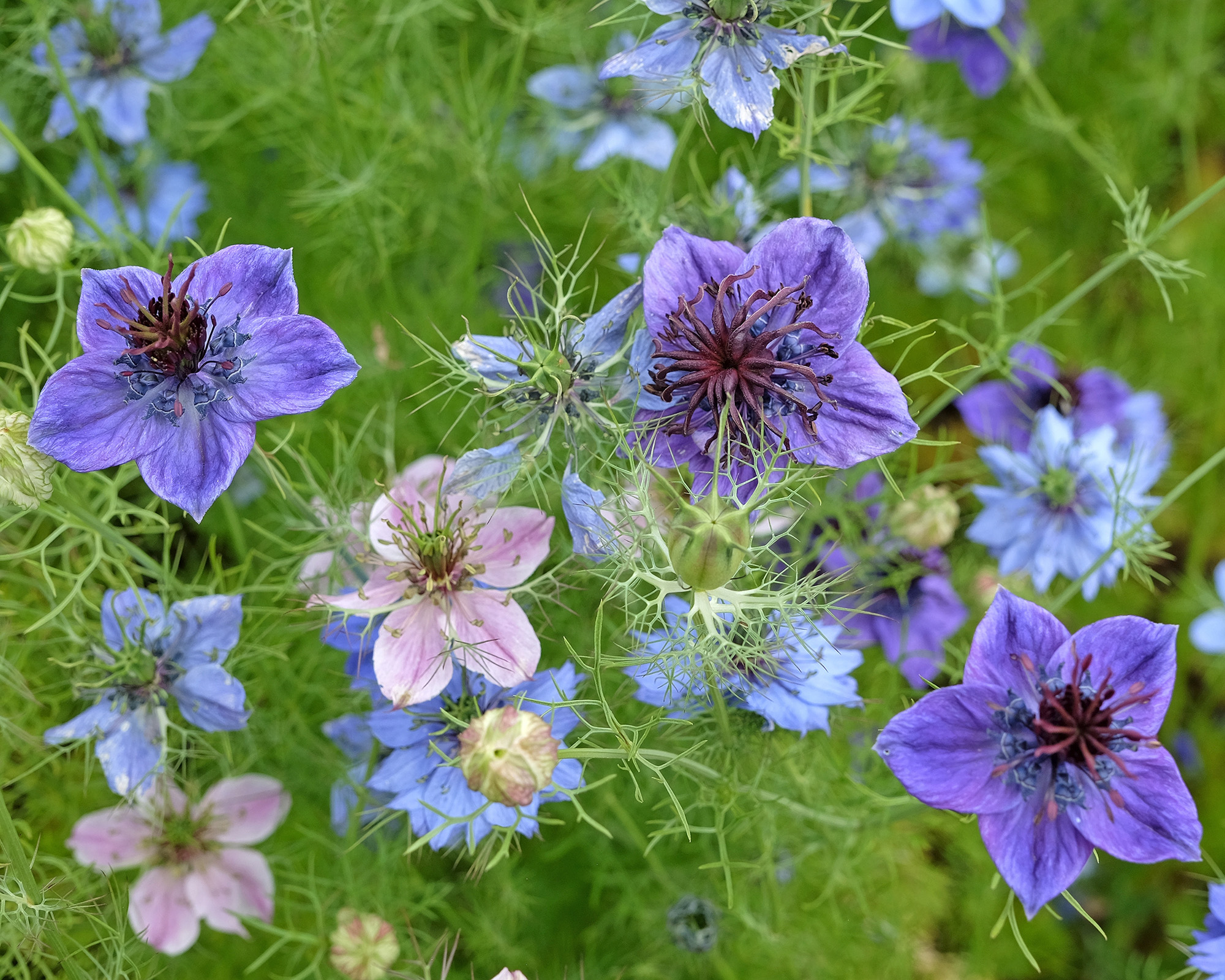
Nigella – or love in a mist – is a distinctive, delicate, and beautiful flower. It can be sown successionally from seed to provide flowers all summer long. After flowering, the stems that are not cut will produce amazing seed pods that look great in buttonholes. A white Nigella flower can serve as a focal point in a buttonhole or be woven into a bride's bouquet.
10. Phacelia
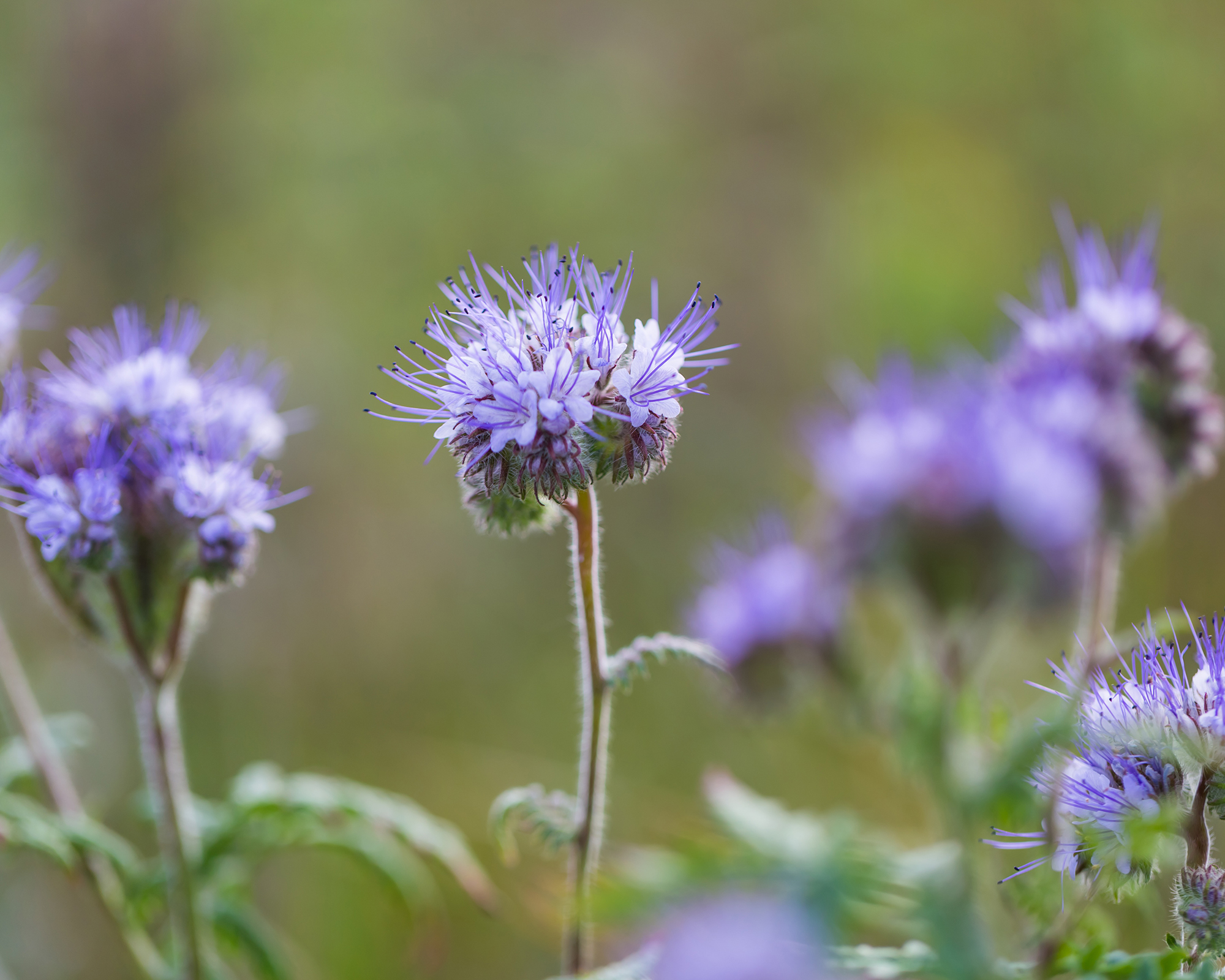
Phacelia is normally grown as a green manure, but it actually works beautifully as a cut flower, which stands up well out of water. It is a hardy annual that is very easy to grow from seed. You can either plant it in the autumn for stronger plants and earlier flowers the following year or sow it in the spring. Its purple/white flowers complement other bouquet choices, like Scabiosa and Cosmos, beautifully.

The only child of a horticulturist and an English teacher, Liz Baessler was destined to become a gardening editor. She has been with Gardening Know how since 2015, and a Senior Editor since 2020. She holds a BA in English from Brandeis University and an MA in English from the University of Geneva, Switzerland. After years of gardening in containers and community garden plots, she finally has a backyard of her own, which she is systematically filling with vegetables and flowers.
- Catherine DuncanWriter